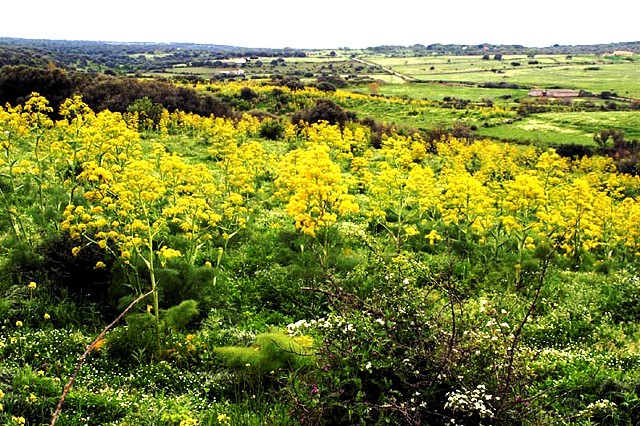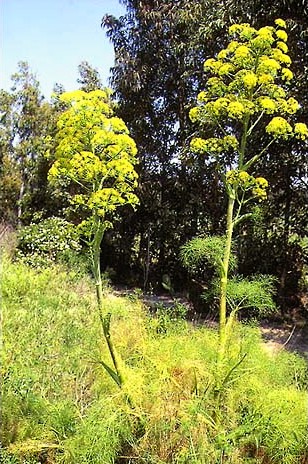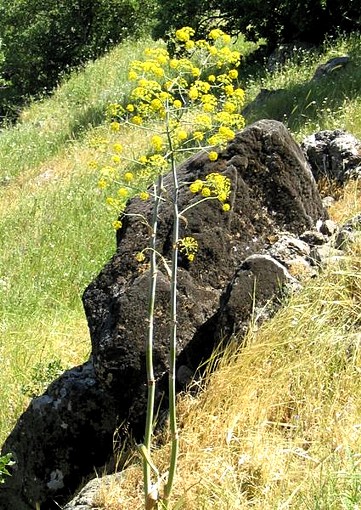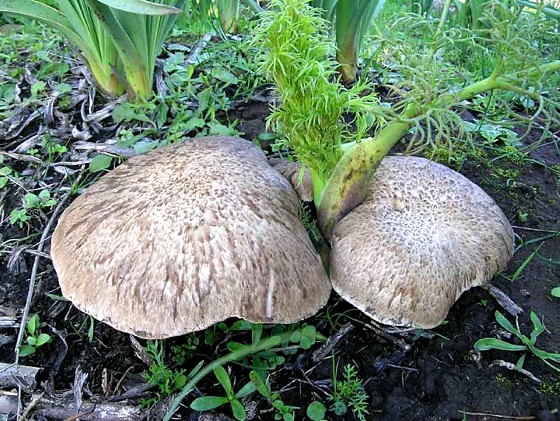Lessico
Ferola
Ferula communis

Ferula: genere di piante della famiglia Ombrellifere con circa 80 specie delle
regioni mediterranee e dell'Asia. Sono erbacee perenni alte anche alcuni
metri; alcune specie dell'Asia producono l'assafetida![]() ,
altre il galbano
,
altre il galbano![]() .
.
In Italia cresce spontanea la Ferula communis (ferola, ferolaggine o finocchiaccio), alta anche oltre 2 m, con foglie odorose, ripetutamente pennate, e fiori gialli. Da fresca è velenosa per il bestiame, ma pare perda tale potere essiccando. È specie simbionte con un fungo edule, Pleurotus eryngii var. ferulae.



Pleurotus eryngii var ferulae
Ferula (from Latin ferula, rod) is a genus of about 170 species of flowering plants in the family Apiaceae, native to the Mediterranean region east to central Asia, mostly growing in arid climates. They are herbaceous perennial plants growing to 1–4 m tall, with stout, hollow, somewhat succulent stems. The leaves are tripinnate or even more finely divided, with a stout basal sheath clasping the stem. The flowers are yellow, produced in large umbels. Many plants of this genus, especially Ferula communis are referred to as "giant fennel," although they are not fennel in the strict sense.
Selected species
Ferula
assafoetida - Asafoetida
Ferula caspica
Ferula communis - Giant fennel
Ferula conocaula
Ferula foetida
Ferula gummosa, syn. galbaniflua - Galbanum
Ferula hermonis
Ferula karelinii
Ferula linkii
Ferula longifolia
Ferula marmarica
Ferula moschata, syn. sumbul - Muskroot
Ferula narthex - Ferula
Ferula orientalis
Ferula persica
Ferula schair
Ferula szowitziana
Ferula tingitiana
The Roman spice silphium probably came from a now extinct species of Ferula.
Uses
The gummy resin of many species of Ferula is used for medical or culinary purposes:
Ferula
assafoetida is used to make the spice asafoetida, or hing
Ferula gummosa makes galbanum
Ferula persica makes sagapenum
Ferula moschata makes sumbul
Ferula tingitana makes "African Ammoniacum"
Silphium was used to make laserpicium
The Romans called the hollow light rod made from this plant a ferula (compare also fasces, judicial birches). Such rods were used for walking sticks, splints, for stirring boiling liquids, and for corporal punishment.
The ferula also shows up in mythological contexts. The main shaft of a thyrsus was traditionally made from this plant, and Prometheus smuggled fire to humanity by hiding it in a ferula as well.
Women in Central Asia as well as a small number in the Appalachian mountains of North Carolina use these to induce abortion in first trimester.